
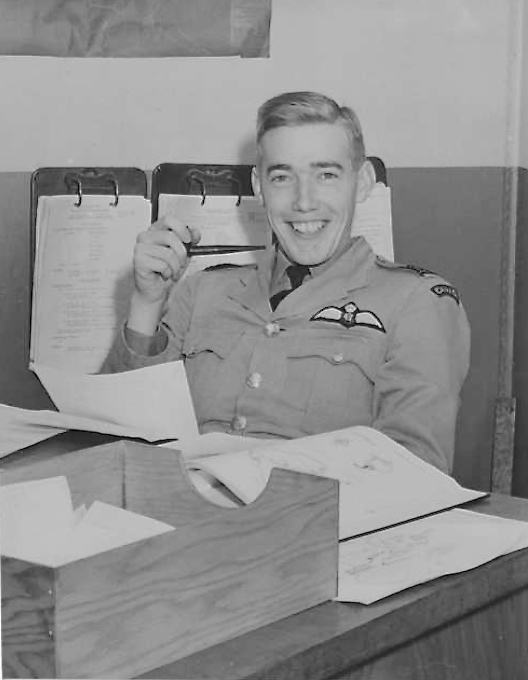

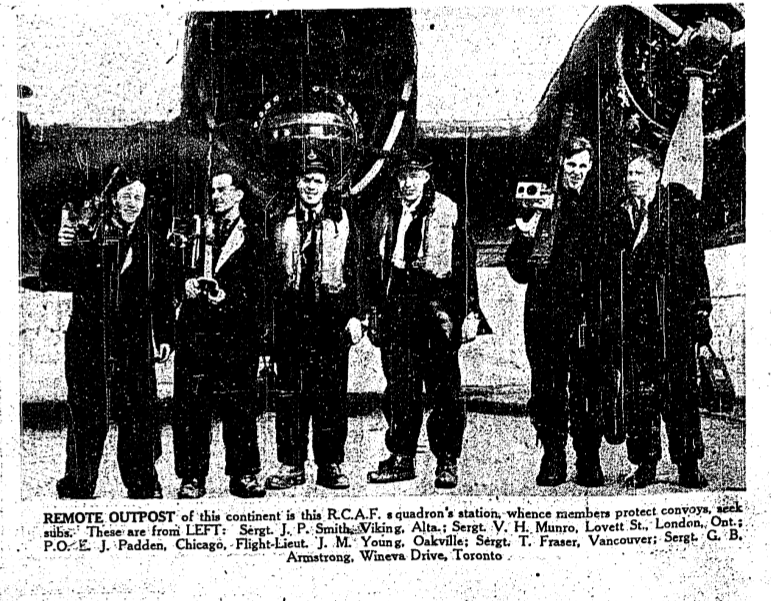
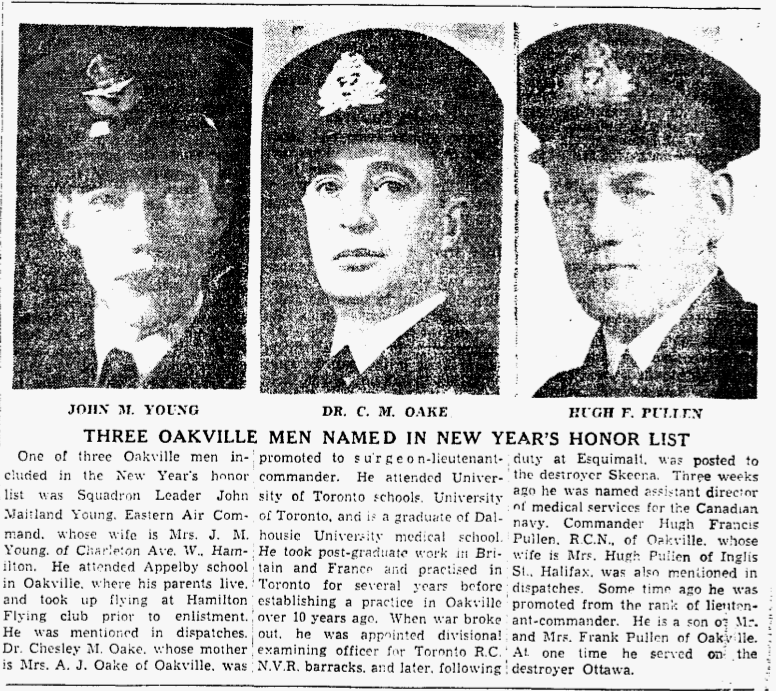
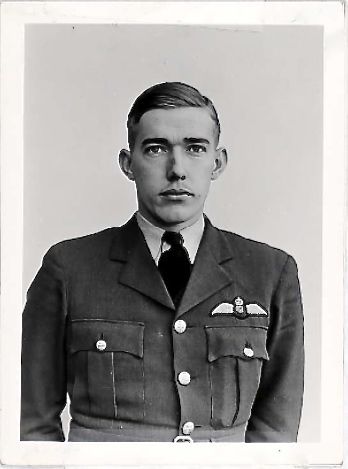
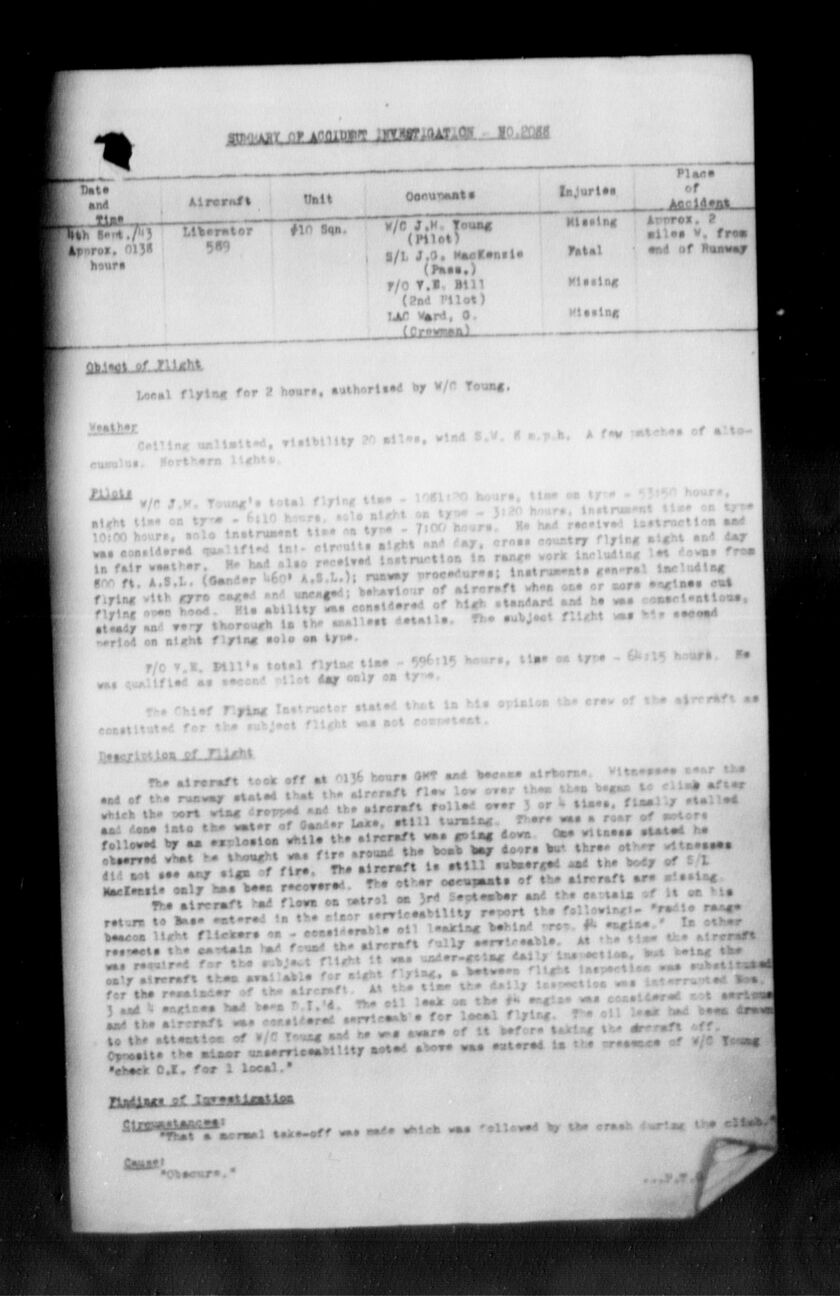
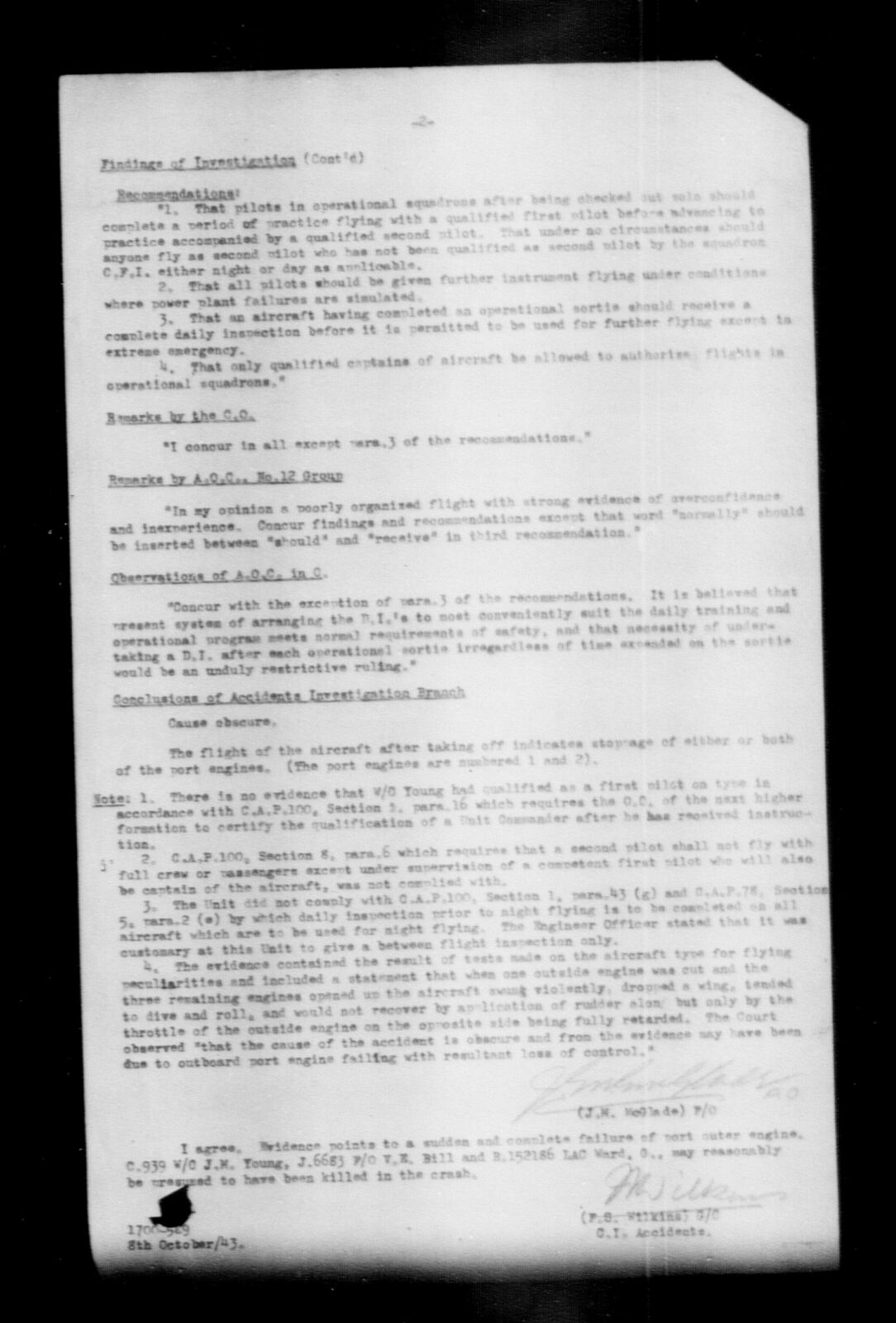
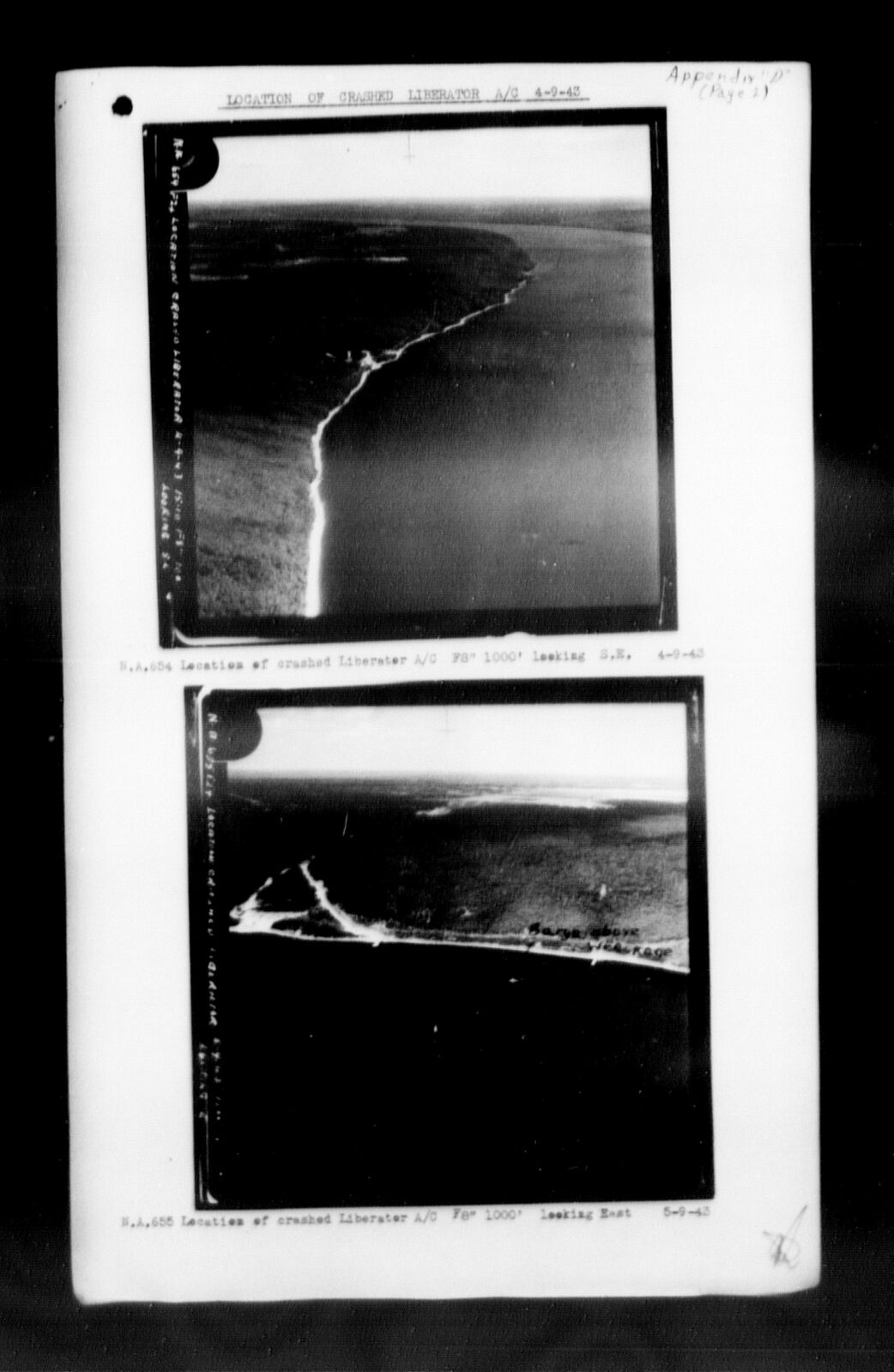
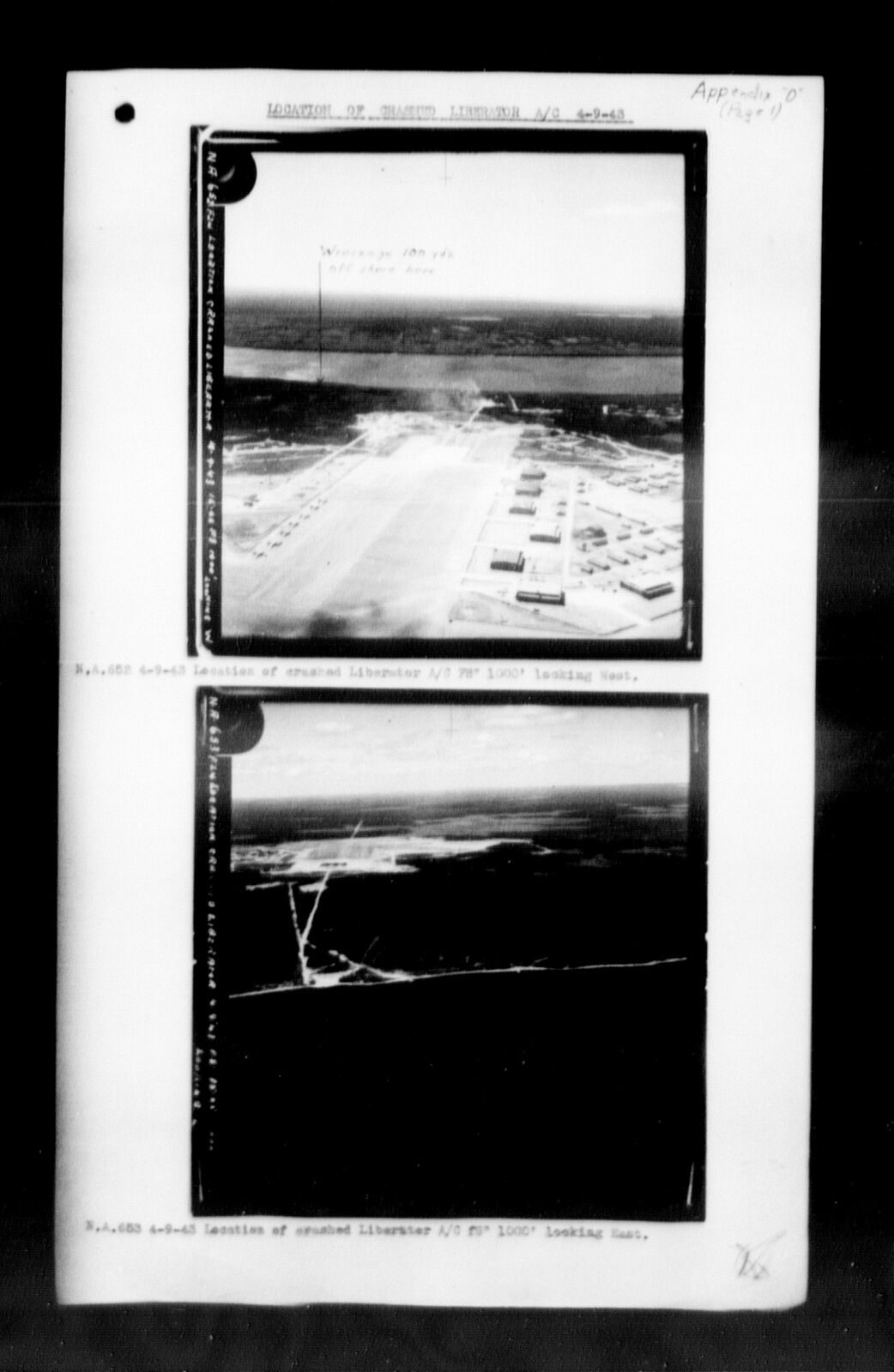

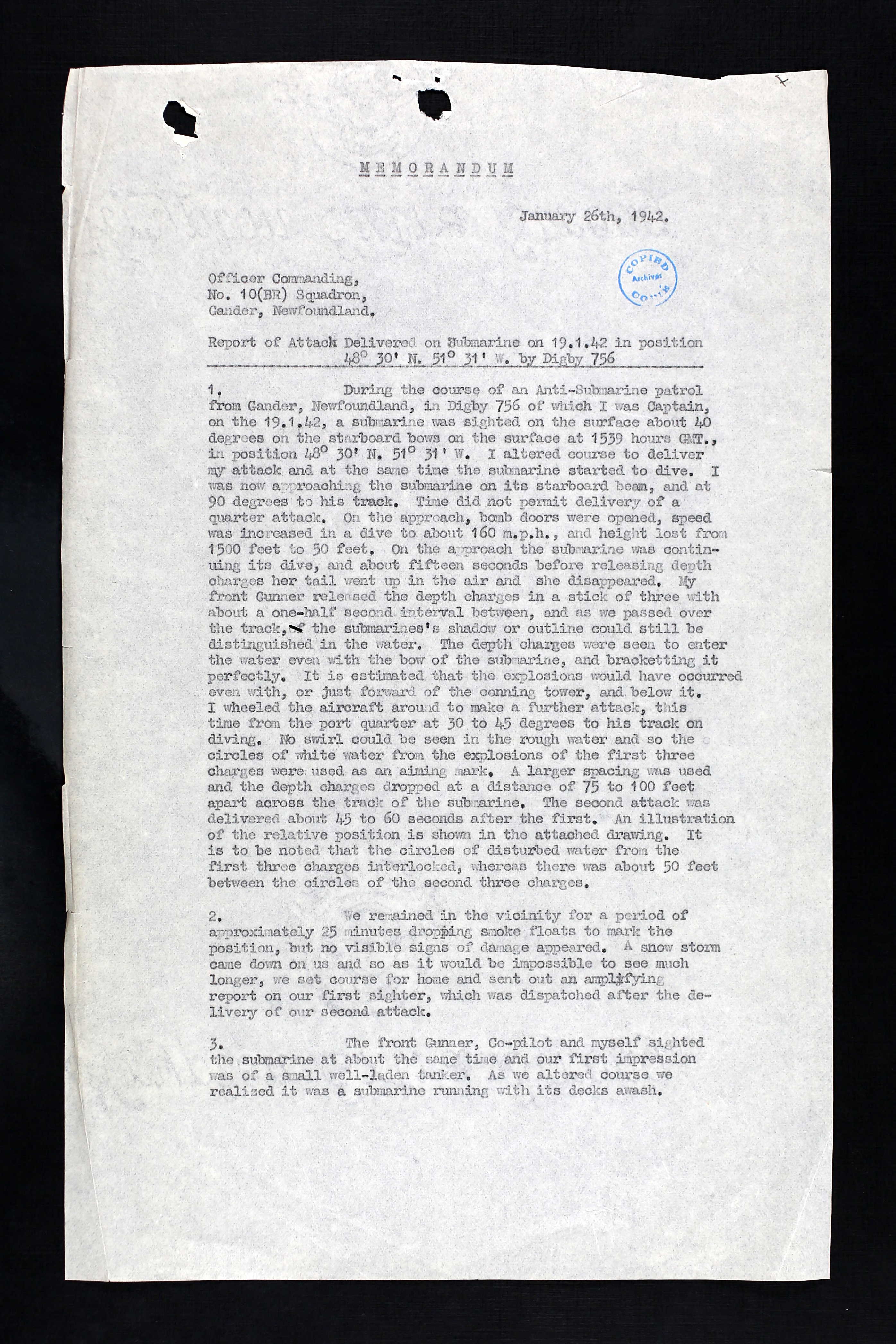
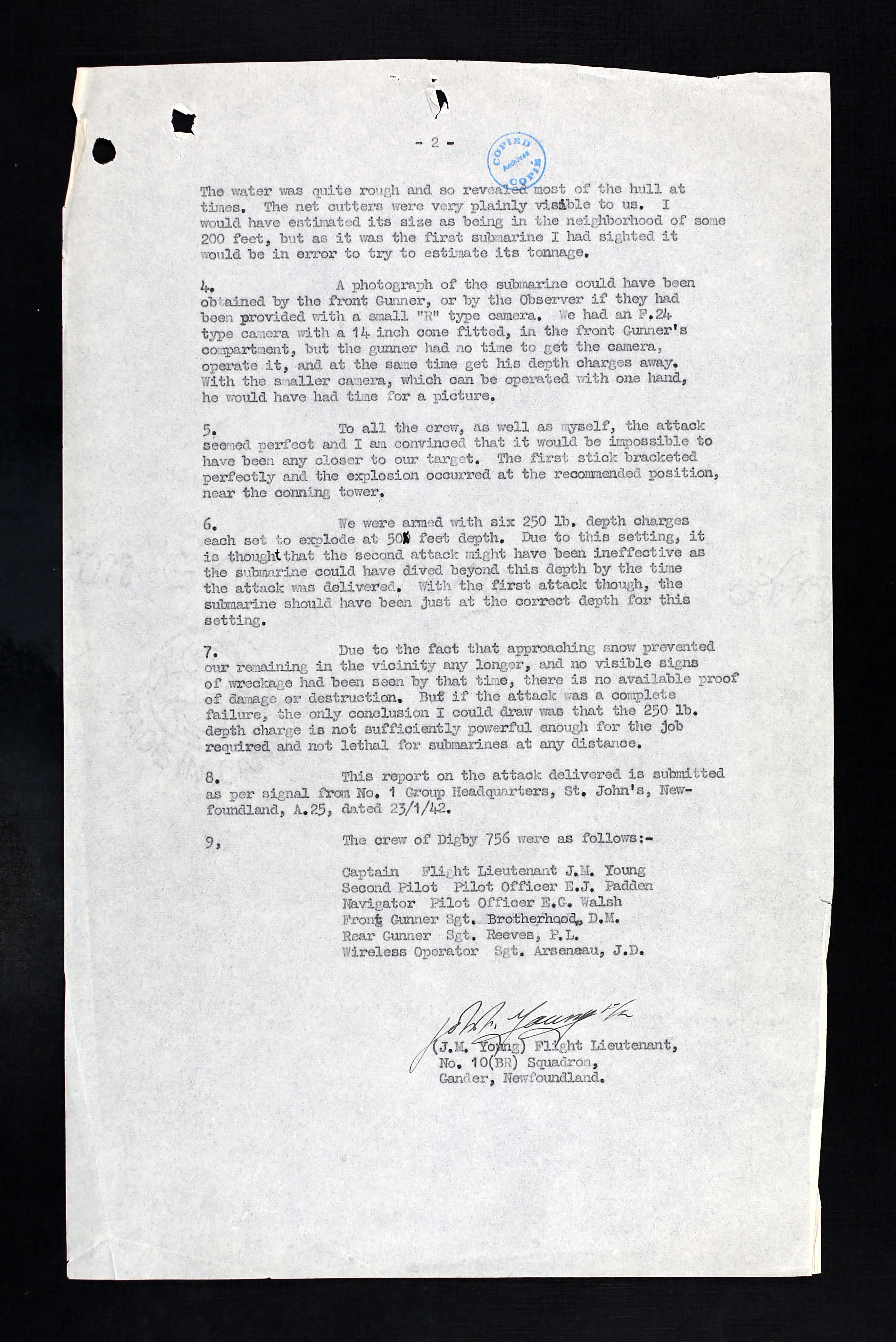
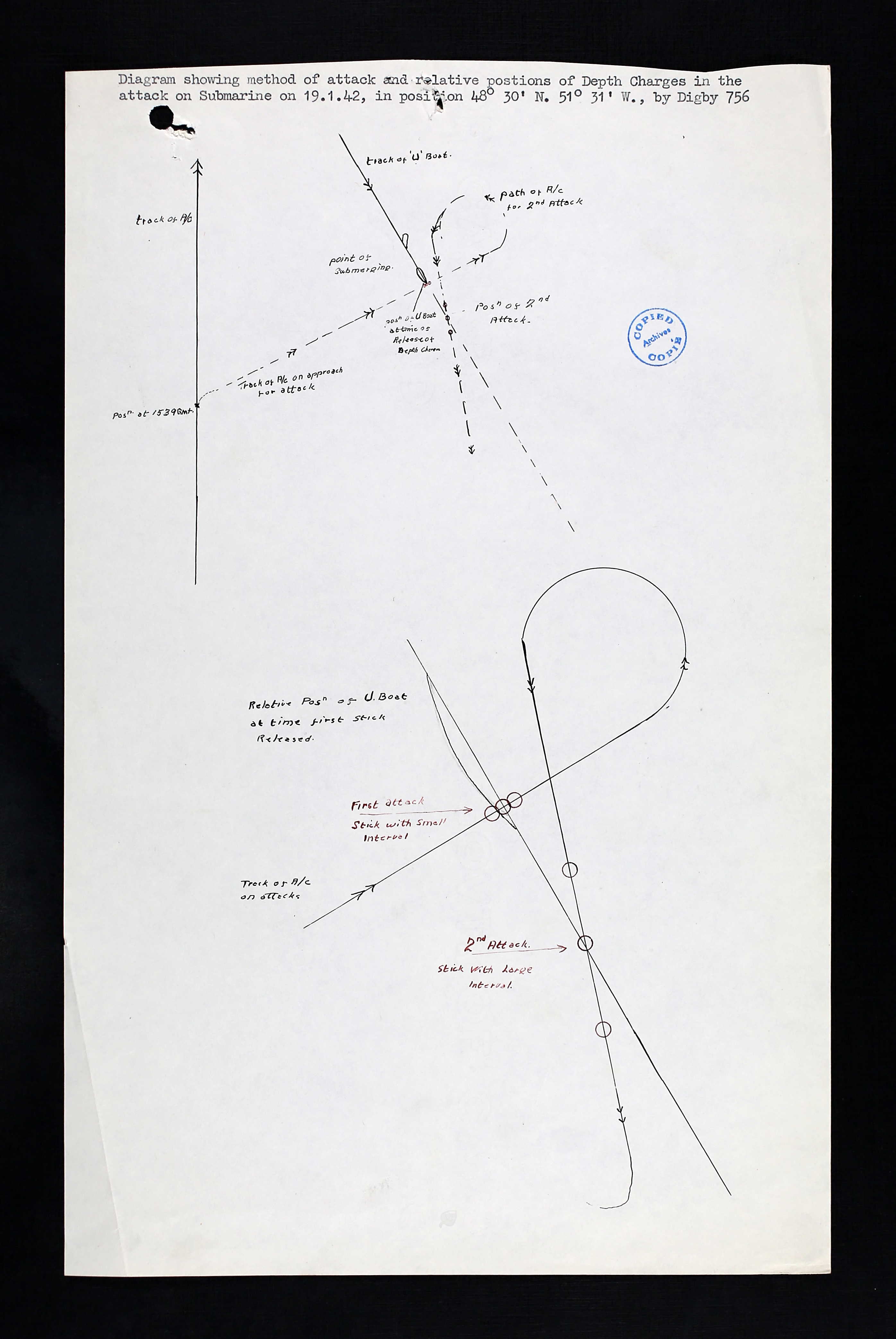

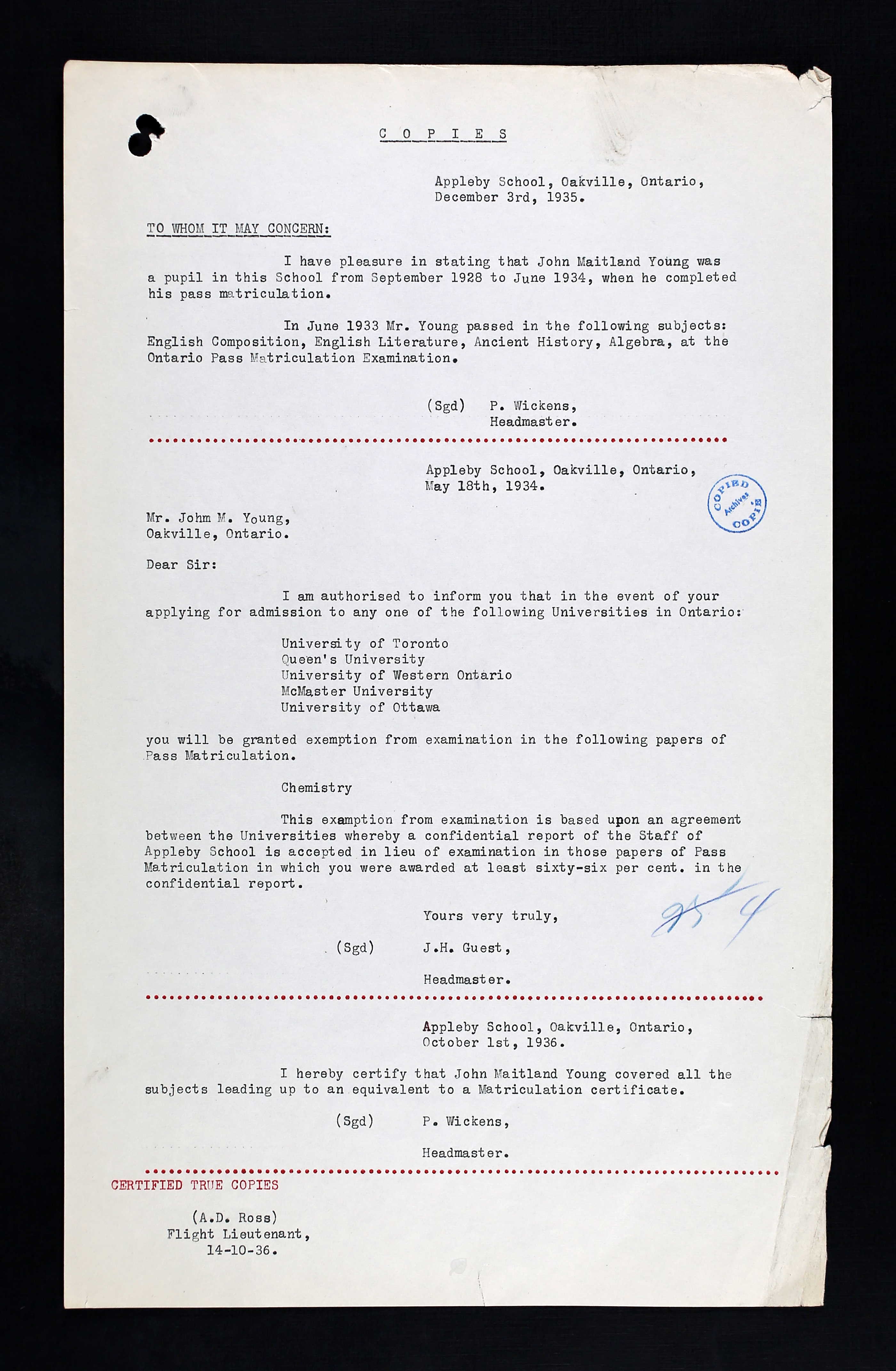
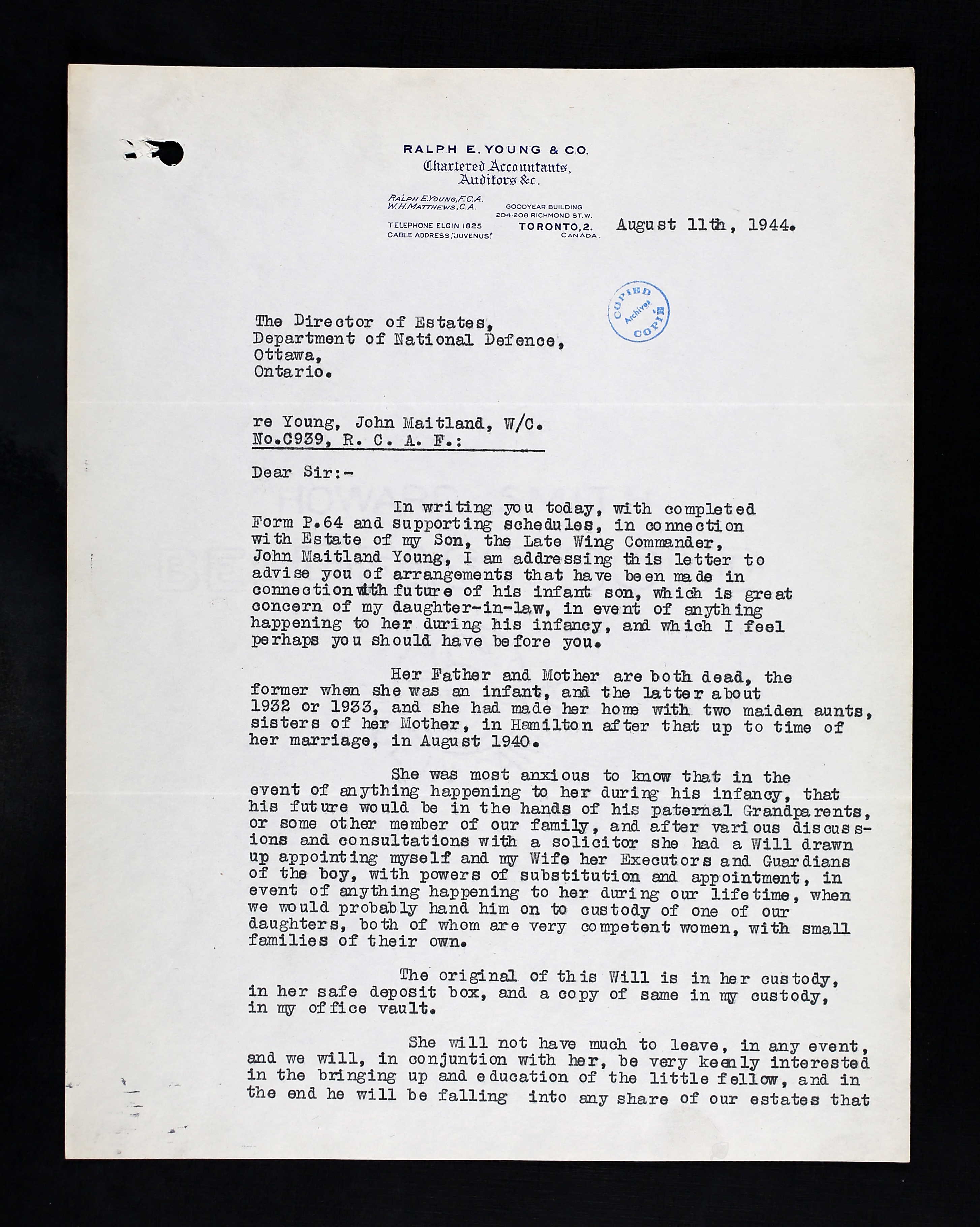

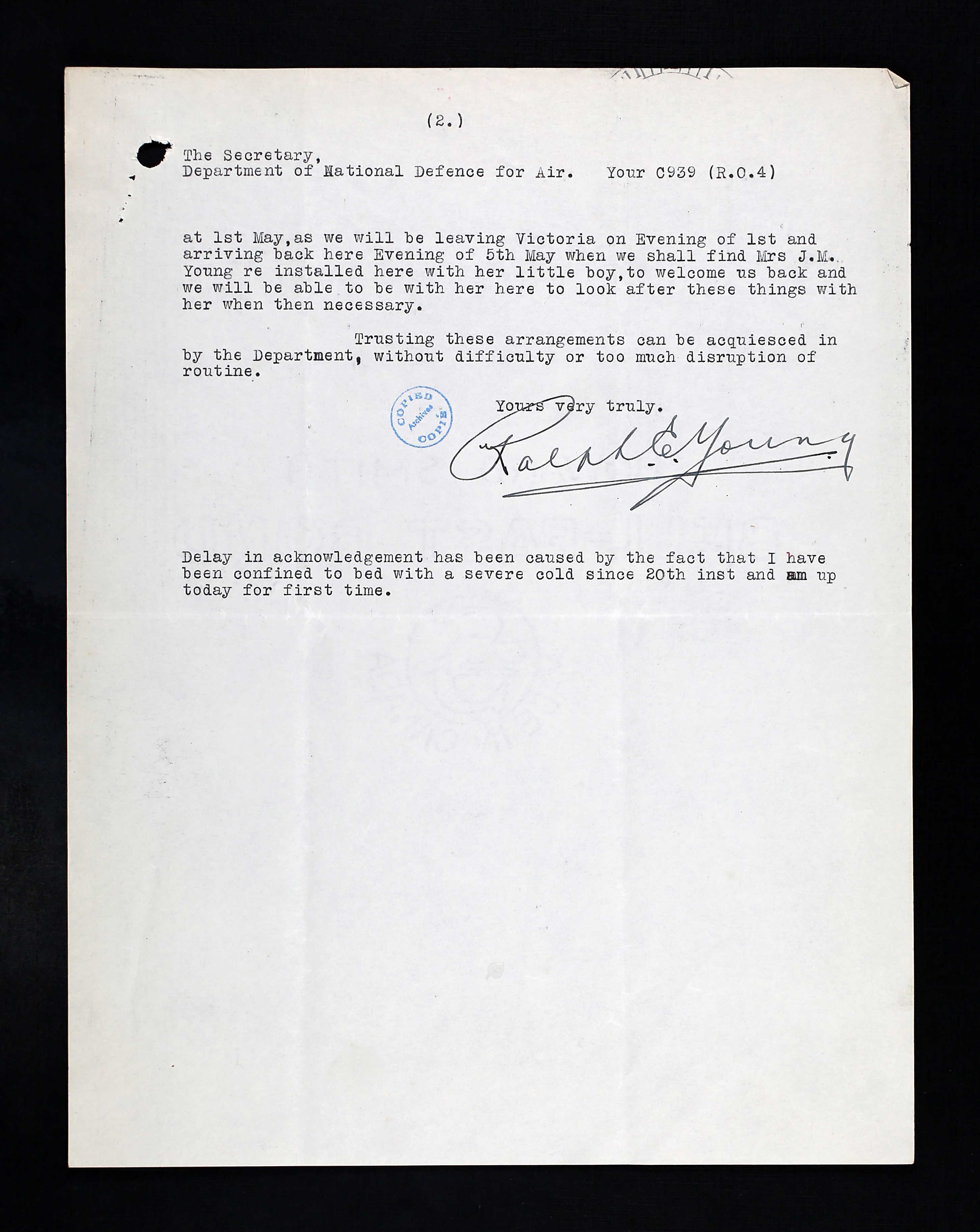
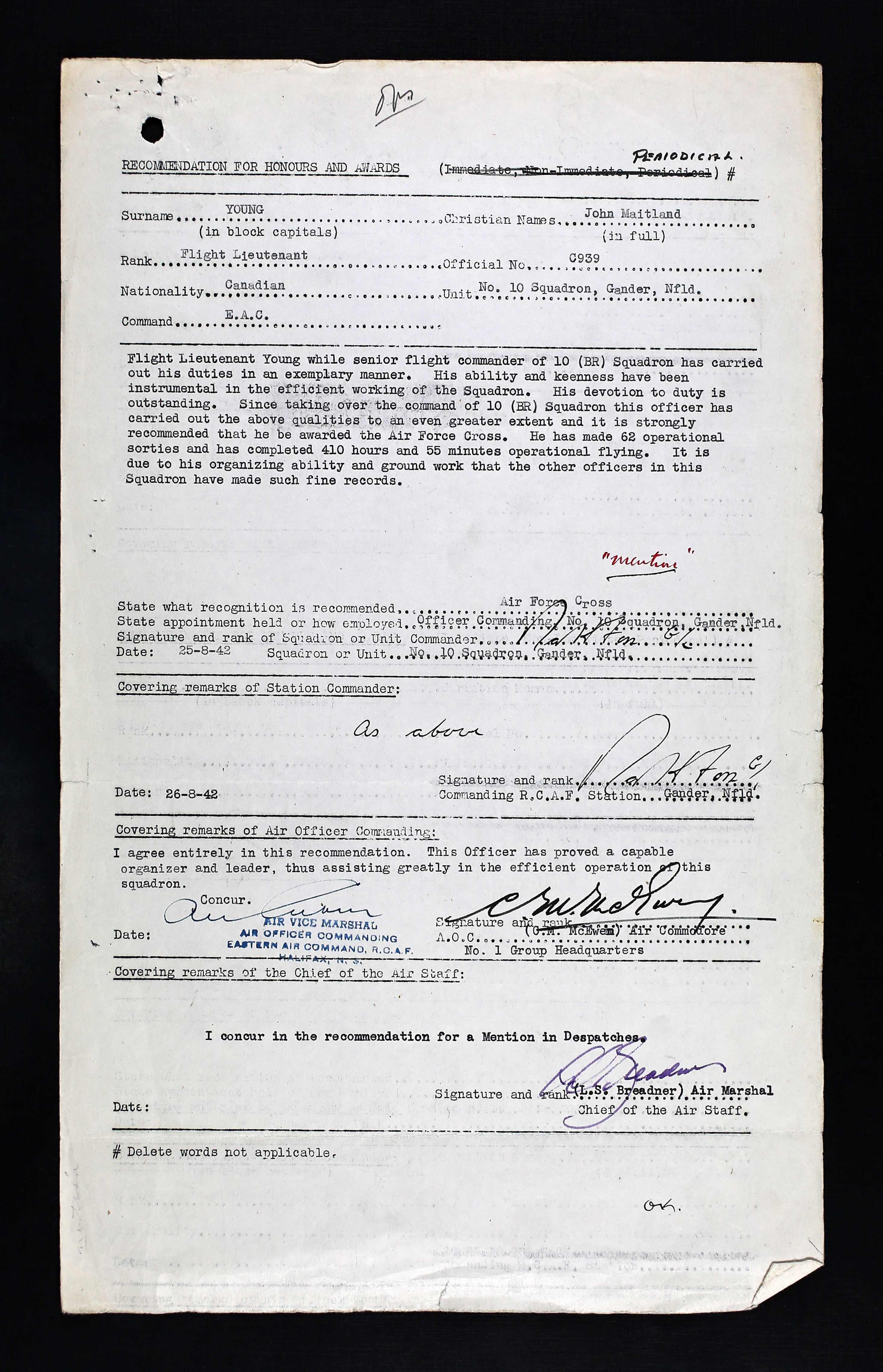
June 29, 1917 - September 4, 1943




















John Maitland Young was the son of Ralph Edward Young (1873-1950), chartered accountant, and Edith Grasett (nee Snider) Young (1876-1962). He had one brother, Major Ralph Grasett Young and two sisters, Helen Marjorie Taylor and Ethelyn Mary Pullen.
John had attended Toronto University in 1938, studying aerial navigation. “I have flown as a pupil and pilot while learning to fly. I now hold a Private Pilot’s License. Flying Course taken at Hamilton Aero Club. Number of hours flown: Dual: 13:45; Solo: 5:20.”
John stood 5’9” tall and weighed 149 pounds. He was considered athletic and alert. He enlisted with the RCAF on October 1, 1938. He had applied in 1937. Prior, he had been a junior audit clerk with his father’s company, Ralph E. Young & Co. from 1935-1938. He enjoyed sailing, tennis, hockey, and skiing. He liked collecting stamps and liked photography. He was also a cadet at Appleby School, 1931-34. He wanted to remain in the RCAF after the war.
He took flying instruction in October 1939, but did not complete Link Training. He took navigation and reconnaissance courses, where he was third.
He was taken on strength with No. 119 Bomber Reconnaissance Squadron November 6, 1939. He was then sent to Yarmouth, December 1940, then to Rivers, Manitoba, back to Yarmouth, then to No. 10 BR, Gander, Newfoundland by October 1941. In August 1942, he went to Dartmouth.
At No. 1 ANS: 8th out of 10 in class with a 73.8%. “A good student, but mainly interested in practical applications. This officer is better than his marks would indicate although he lacks a critical attitude.”
October 20, 1939, No. 119 Squadron, Hamilton, Ontario: “A steady, cool, conscientious officer of marked ability. His special aptitude was evidenced in the field of navigation and meteorology. Having taken his first year at Toronto University, aeronautical engineering.”
May 10, 1940: “Steady, serious minded, conscientious officer. Has considerable photographic knowledge and experience.” On August 14, 1940, he married Constance Isobel Grace in Hamilton, Ontario at Central Presbyterian Church, Charlton Avenue West. She had been studying architecture at the U of T. She followed him to the east coast and resided in Yarmouth November 11, 1940: “Good average pilot, intelligent and capable. Qualified to carry out the duties of commissioned rank.” December 15, 1940: “Intelligent, capable, shows marked keenness and ability if interested. Average pilot.” He earned his Pilot’s Flying Badge December 20, 1940. June 15, 1941: “Above average pilot. Awarded the symbol ‘N.’ Enthusiastic only towards his own work at which he is doing a good job. Fair administrator and average ability to lead. Should develop with proper guidance into an above average Squadron Leader. Satisfactory officer.” Yarmouth December 2, 1941: “A hard working specialist Navigation officer. Is a capable pilot with good knowledge of reconnaissance work. Keen and competent.” GanderOn January 19, 1942, John was aboard Digby 756, involved in an attack delivered on a submarine from Gander, Newfoundland. The submarine dove as “I altered course to deliver my attack…time did not permit delivery of a quarter attack.” [SEE DOCUMENT ABOVE.]
June 18, 1942: “This Officer is employed as navigation Officer at this unit and his work has been excellent. He is a loyal enthusiastic officer with high standards, is a good experience operational pilot and has an inventive mind. A university engineering graduate. He is particularly suited to operational squadron employment where his ready mind can adapt or incorporate new ideas or equipment readily as required. This officer is considered fit for promotion to S/L.” Gander June 26, 1942: “This officer…has shown himself to be energetic, capable and loyal. The high state of training to which navigation has progressed at this unit is a tribute to his professional ability.” On August 25, 1942, he was recommended for honours and awards with No. 10 Squadron in Gander. [SEE DOCUMENT ABOVE.]. Mentioned in Dispatches January 1943.
August 29, 1942: “He is very young, and there is doubt of his ability in the minds of some of the members of the squadron. It is, however, too early to judge…recent reports on this officer indicate that he has carried his weight with this Unit and is quite satisfactory.”Wing Commander John Maitland Young was the first pilot aboard Liberator 589 on September 4, 1943. “Flying accident (about 150 yards offshore north side of Gander Lake, about one mile south west of west end of runway.” Others on board were W/C J. W. Young, Pilot, S/L John Grant MacKenzie, passenger (medical researcher observer), and LAC G. Ward, crewman. S/L MacKenzie’s body was recovered. [“S/L MacKenzie had reported on temporary duty to RCAF Station, Gander, to investigate the deafness in aircrew. He intended to fly various types of aircraft, investigating the amount of noise in different positions in the plane, his idea being to correlate the positions of men in aircrew with their hearing loss. On this particular flight in Liberator 589, he was carrying out this investigation.” Medical Officer F/L Melrose Keir MacGougan, (1909-2003) C14798]. S/L MacKenzie’s injuries included mandibular fracture, multiple rib fractures, fractured right humerus, dislocated left patella, multiple facial lacerations, possible skull fracture causing instant mortality.
“Liberator 589 is under 138 feet of water on the bottom of Gander Lake. The body of Squadron Leader MacKenzie has been recovered from the wreckage by Royal Canadian Navy divers. That from the divers’ descriptions of the wreckage, the aircraft is very seriously damaged. Salvage of the wreckage will be extremely difficult.”
A Court of Inquiry was struck. Seventeen witnesses were called.
OBJECT OF FLIGHT: Local flying for two hours, authorized by W/C Young. WEATHER: Ceiling unlimited, visibility 20 miles, wind SW, 8 mph. A few patches of altocumulus. Northern lights.
PILOTS: W/C Young’s total flying time: 1081 hours. Time on type: 50:30 hours. Night time on type: 6:10 hours. Solo night on type: 3:20 hours. Instrument time on type: 10 hours. Solo instrument on type: 7 hours. He had received instruction and was considered qualified in circuits night and day, cross-country flying night and day in fair weather. He had also received instruction in range work including let downs from 800 feet, runway procedures, instruments general, including flying with gyro caged and uncaged, behavior of aircraft when one or more engines cut flying open hood. His ability was considered of high standard and he was conscientious, and very thorough in the smallest details. The subject flight was his second. On night flying solo on this type. F/O Bill’s total flying time: 596:15 hours; time on type: 64.15 hours. Qualified as second pilot day only on type. The chief flying instructor stated that in his opinion the crew of the aircraft as constituted for the subject flight was not competent.
DESCRIPTION OF FLIGHT: The aircraft took off at 0136 hours and became airborne. Witnesses near the end of the runway stated that the aircraft flew low over them then began to climb after which the port wing dropped and the aircraft rolled over three or four times, finally stalled and dove into the water of Gander Lake, still turning. There was a roar of motors followed by an explosion while the aircraft was going down. One witness stated he observed what he thought was fire around the bomb bay doors, but three other witnesses did not see any sign of fire. The aircraft is still submerged and the body of Squadron Leader MacKenzie only has been recovered. The other occupants of the aircraft are missing.
The aircraft had flown on patrol on September 3rd and the captain of it on his return to base entered in this minor serviceability report the following: radio range beacon light flickers on, can still oil leakage behind prop #4 engine. In other respects, the captain had found the aircraft fully servicable. At that time, the aircraft was repaired for the subject flight it was undergoing T inspection but being the only aircraft than available for night flying, between flight inspection was substituted for the remainder of the aircraft. At the time the daily inspection was interrupted, numbers three and four engines had been D. I. The oil leak on the 4th engine was considered not serious and the aircraft was considered serviceable for local flying. The oil leak had been drawn to the attention of Wing Commander young and he was aware of it before taking the aircraft off. Opposite the minor unserviceability noted above was entered in the presence of Wing Commander Young: “check OK for one local.”
FINDINGS OF INVESTIGATION: That a normal takeoff was made which was followed by the crash during the climb. Cause: obscure.
RECOMMENDATIONS: 1. That pilots in operational squadrons after being checked out solo should complete a period of practice flying with a qualified first pilot before advancing to practice accompanied by a qualified second pilot. That under no circumstances should anyone fly a second pilot who has not been qualified as second pilot by the squadron CFI either night or day as applicable. 2. That all pilots should be given further instrument flying under conditions where powerplant failures are simulated. 3. That an aircraft having completed an operational sortie should a complete daily inspection before it is permitted to be used for further flying except in extreme emergency. 4. That only qualified captains of aircraft be allowed to authorize flights in operational squadrons.
REMARKS BY THE CO: “I concur in all except paragraph three Of the recommendations.” REMARKS BY AOC, No. 12 Group: “In my opinion a poorly organized flight with strong evidence of overconfidence and inexperience. Concur findings and recommendations except that word normally should be inserted between should and receive in 3rd recommendation.” OBSERVATIOINS OF AOC in C: “Concur with the exception of paragraph three of the recommendations. It is believed that the present system of arranging the D. I. To most conveniently suit the daily training and operational program meets normal requirements of safety, and that necessity of undertaking a D. I. After each operational sortie, irregardless of time extended on the sortie would be an unduly restrictive ruling.”
CONCLUSIONS OF AIB: Cause obscure. The flight of the aircraft after taking off indicates stoppage of either or both of the port engine. Note: 1. There is no evidence that Wing Commander Young had qualified as a first pilot on type which requires the approval of the next tier formation to certify the qualification of a unit commander after he has received instruction. 2. The second pilot shall not fly with a full crew or passengers except under supervision of a competent first pilot who will also be captain of the aircraft. This was not complied with. 3. The unit did not comply with daily inspections prior to night flying which is to be completed on all aircraft which are to be used for night flying. The engineer officer stated that it was customary at this unit to given between flight inspection only. 4. The evidence contained the result of tests made on the aircraft type for flying peculiarities and included a statement that when one outside engine was cut and the three remaining engines opened up, the aircraft swung violently, dropped a wing, tended to dive and roll, and would not recover by application of rudder alone, but only by the throttle of the outside engine on the opposite side being fully retarded. The court observed that the cause of the accident is obscure and from the evidence may have been due to outboard port engine failing with resultant loss of control.
G/C F. S. Wilkins, Accident Investigation Branch noted in a memo October 13, 1943: “the evidence in this investigation is not entirely satisfactory but for what it is worth, in my opinion, the accident was due to sudden and complete failure of the port outer engine inducing a rolling motion to the aircraft which the pilot failed to correct by shutting down the other outer engine.” He asked about the efficiency of the system of inspection in the squadron.
On October 20, 1943, he wrote: “On the balance, I think the accident was really due to the lack of experience of the crew, but there are accusations concerning maintenance which might be cleared up.”
In March and August 1944, Mr. Maitland wrote to the Director of Estates in Ottawa on behalf of his daughter in law and infant grandson, born September 25, 1943. [SEE DOCUMENTS ABOVE.]
In July 1945, Constance wrote a letter to the Department of National Defence for Air. She applied for the War Service Gratuity. “My husband, the late Wing Commander John Maitland Young (C939) who was a member of the 119th Auxiliary Squadron in Hamilton in 1938 becoming active on September 3, 1939, the day war broke out. He served continuously in the Royal Canadian Air Force from that date to the date of his death in a flying accident in Newfoundland, September 3, 1943. Eighteen months of his service was spent Overseas in Newfoundland.”
In early January 1956, Constance, who had remarried by 1951, had been living in England, then lived in Oakville, Ontario, received a letter informing her that since John had no known grave, his name would appear on the Ottawa Memorial.
An article about the discovery of the airplane can be found in the September 2022 issue of Legion Magazine.
LINKS: